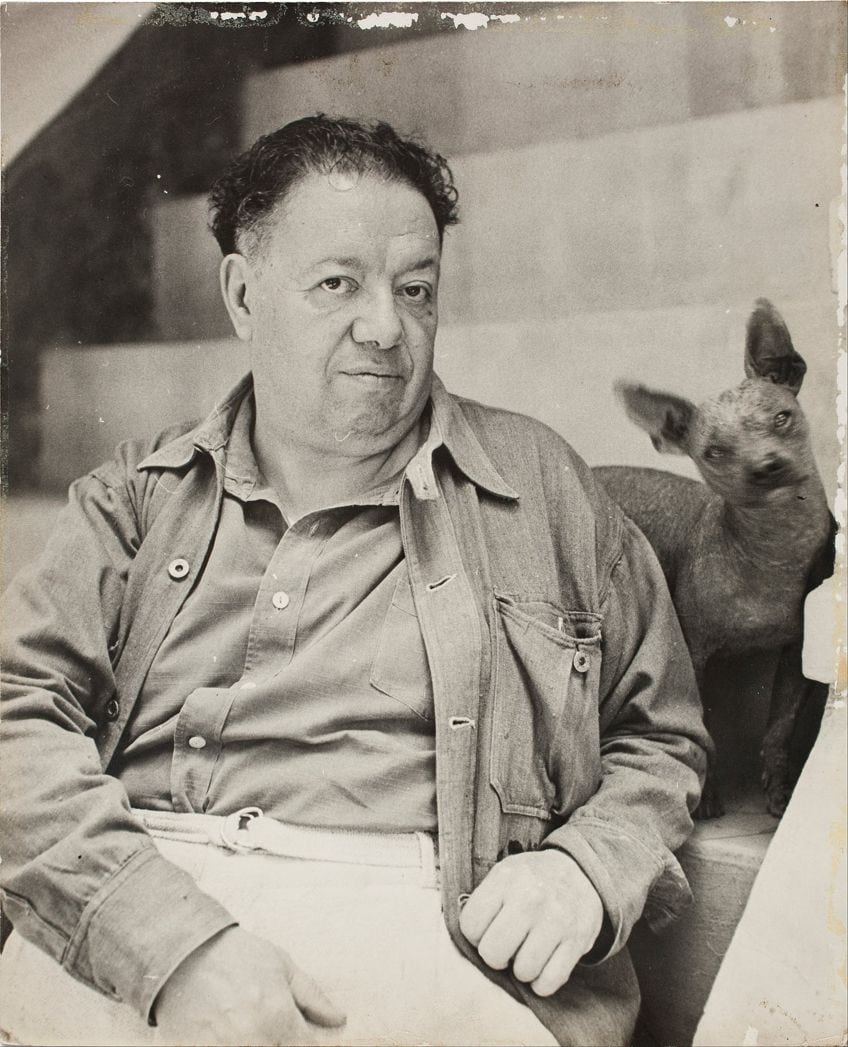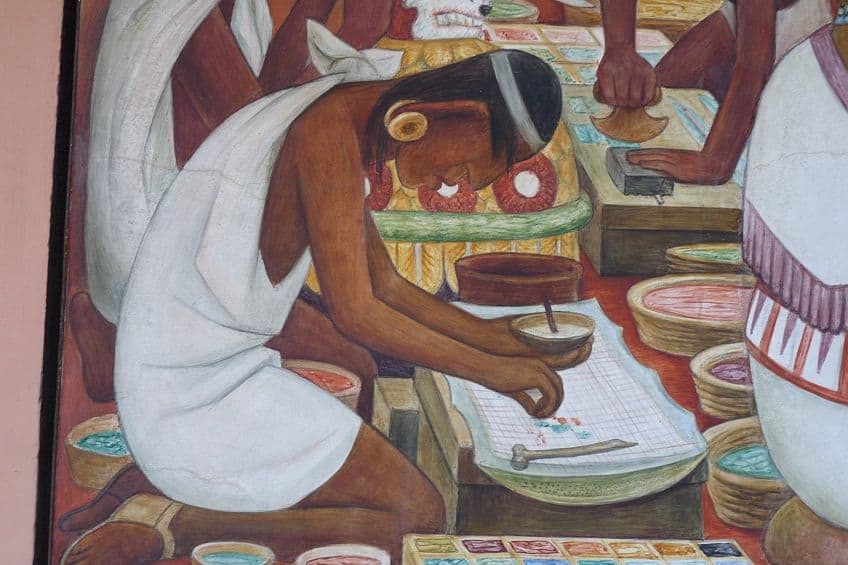“The Flower Carrier” by Diego Rivera – A Painting Analysis
The Flower Carrier by Diego Rivera was produced in 1935 and is also known as El Cargador de Flores. As with many of the artist’s paintings, this famous flower painting is able to transmit a significant amount of meaning and symbolism while imparting simplicity. The vivid hues are said to be reminiscent of one of his personal favorite artists, Vincent van Gogh. To learn more about this famous artwork by Diego Rivera, carry on reading below!
Contents
Understanding the Meaning of The Flower Carrier by Diego Rivera
Diego Rivera’s public presence and the legendary reputation placed upon him in Mexico were such that he became a figure of myth during his own lifetime. Diego Rivera was regarded as a very significant figure in the Mexican muralist movement that arose in the early 20th century. This movement attempted to use public art to reflect Mexican culture, history, and issues. He was most well-known for his murals that were painted across Mexico, in fact is credited with reintroducing frescoes to a whole new generation. While born in Mexico, he also spent a large amount of time living in the United States and Europe.

As a committed Marxist, he actively engaged in politics, joining the Mexican Communist Party in 1922. The Mexican Revolution, a period of enormous social and political turmoil in Mexico, had a profound impact on Rivera’s art. This revolution planned to address labor rights and land reform issues, and the welfare of Mexicans. Throughout his life, the artist was a significant driving force in the development of the national art of Mexico. His effect on American conceptions of public art, however, was one of his most lasting legacies.
However, the work we will be looking at today, known as El Cargador de Flores, is not a public mural but can be found at the San Francisco Museum of Modern Art.
The Flower Carrier by Diego Rivera
| Artist | Diego Rivera (1886 – 1957) |
| Date Completed | 1935 |
| Medium | Oil and tempera on masonite |
| Dimensions (cm) | 121 x 121 |
| Location | San Francisco Museum of Modern Art, San Francisco, United States |
This painting depicts one of the artist’s favorite subjects, as well as his admiration for Mexico’s underclass and vendors. Rivera publicly endorsed the ideals of the Revolution with his murals, and he regularly asserted his connection with the common people, passionately associating himself with them and the burdens of their inequality. He honors an archetype, not a real person with his own unique qualities in this flower painting. Rivera may have romanticized the peasants he portrayed, with their sandals and yellow straw hats, yet this flower painting is ultimately a protest of Mexico’s terrible working conditions, not merely a philosophy of a simpler way of life.
The choice of flowers underlines this: they are a luxury for those with the most money, a classy representation of their social status. Yet, these same flowers are merely things to be exchanged for the worker, who is unable to appreciate their beauty. The painting was acquired in 1935, which suggests that the artist sold it very shortly after completion. It is still a highly regarded piece in the SFMoMA collection and is unlikely to be relocated anytime soon, if you want to see it in person, be sure to go check it out at the San Francisco Museum of Modern Art.
Composition
In Rivera’s vivid flower painting, a male peasant in white clothing wearing a yellow hat strains to get up under the weight of an impractically large basket of flowers secured to his back. A woman who is probably the wife of the peasant is standing behind him, attempting to assist with the basket’s support while he tries rising from the ground. She is dressed in a purple-colored top with a long orange skirt that covers her legs.
The contrast between the vivid colors of the flowers and the earthy hues of the carrier and backdrop creates visual tension in this famous flower painting.
While the flowers may be wonderful to look at for the observer, the peasant only sees their monetary value as he transports them to be sold at the market. The geometric designs provide striking contrasts, with each human, item, and even the vegetation indicated to convey individualism. The thick brushwork lends depth and texture to the artwork, as well as the tactile qualities that distinguish Rivera’s artwork.
Analysis
When first looking at this painting, one could be confused as to how these delicate little blossoms could be so heavy. However, the artist’s emphasis on the large basket leaves no doubt in one’s mind: the peasant carries a heavy burden, not just a bunch of flowers. Some say that the massive basket slung to the man’s back represents the burdens of an unskilled peasant in a capitalistic environment. The flowers represent the beauty and vibrancy of Mexican culture, yet the load alludes to the weight of the country’s history and hardships. They could additionally symbolize the rewards of their labor, implying that there remains beauty and optimism despite the heavy burden of the job. A rather notable and odd artistic choice is the disparity in size between the peasant and the woman. Rivera’s huge female figure may perhaps serve to symbolically emphasize the importance of women’s roles in the Mexican culture of the 1930s.
The artwork embodies all of the disparities of capitalistic and contemporary society. Carrying fragile flowers is not what one would normally consider to be hard work, yet they are burdensome precisely because of their superficiality in society. Despite his anti-capitalist ideals, Rivera was a very contradictory person who was supported by the most powerful business people of his time. Rivera acknowledged the suffering of workers under capitalism, and he understood the rules of the game sufficiently to sometimes make compromises with them. He realized the significance of money, and by building these contacts, he was capable of getting his art into some of the world’s most prominent galleries, thus boosting his own artistic profile. There was also the possibility that he would transmit his political ideals into countries that were not generally receptive to them, such as the United States, by inserting them into his artwork, which could potentially draw an interested audience. After becoming a member of the Mexican Communist Party, he saw how Communism, for instance, might spread across borders.
He subsequently produced an artwork with important political figures from Russia that was directed at the American people.
Style
Rivera was a one-of-a-kind artist who drew inspiration from a wide range of sources. For instance, while he is most known as a Mexican muralist, he also dabbled in Cubism and Realism during his career. There are significant Symbolist influences in this flower painting in how he reflects the larger population of Mexico by using obscured facial characteristics. One might argue that Rivera was a movement unto himself, fusing Mexican and European elements while also covering a wide range of subjects such as portraits, landscapes, and politically motivated works. This painting was produced using tempera and oil on masonite. Masonite is a substitute for natural wood boards that are created from a combination of resin and wood chips and is often a less expensive alternative to the sorts of wood boards that painters have been using for generations.

The Flower Carrier by Diego Rivera is acknowledged as more than just a flower painting. It represents the struggles of the Mexican peasants who try to make ends meet by bearing the burden of hard labor, which in this case is a massive basket of flowers. The flowers may be beautiful and delicate, yet they are also a heavy load for the poor worker. This painting is symbolic of capitalism and the never-ending hardships faced by the working class in Mexico. Exhibited at the San Francisco Museum of Modern Art, it is among Rivera’s most influential pieces.
Frequently Asked Questions
What Is the Original Name of The Flower Carrier by Diego Rivera?
Diego Rivera spoke numerous languages yet gave this work of art a Spanish name at the time, Cargador de Flores. The majority of Western organizations now use the English-translated title, The Flower Carrier, and most individuals refer to the painting by this name. The artist had a soft spot for the west and resided in both the United States and Europe at various stages during his life, so would not have had a problem with the title being translated into English in the West.
What Is the Symbolic Meaning of The Flower Carrier by Diego Rivera?
In this flower painting, we can see a Mexican worker trying to carry a very large basket of flowers. The main theme of this artwork is the idea of having to carry a burden. This symbolizes the heavy burden that peasants had to endure as poor people in a capitalist society. The worker has to carry something heavy just to survive, while the flowers themselves are just unnecessary luxuries for the rich. The flowers may be beautiful, yet to the peasant, it represents nothing but making ends meet.
Jordan Anthony is a Cape Town-based film photographer, curator, and arts writer. She holds a Bachelor of Art in Fine Arts from the University of the Witwatersrand, Johannesburg, where she explored themes like healing, identity, dreams, and intuitive creation in her Contemporary art practice. Jordan has collaborated with various local art institutions, including the KZNSA Gallery in Durban, the Turbine Art Fair, and the Wits Art Museum. Her photography focuses on abstract color manipulations, portraiture, candid shots, and urban landscapes. She’s intrigued by philosophy, memory, and esotericism, drawing inspiration from Surrealism, Fluxus, and ancient civilizations, as well as childhood influences and found objects. Jordan is working for artfilemagazine since 2022 and writes blog posts about art history and photography.
Learn more about Jordan Anthony and about us.
Cite this Article
Jordan, Anthony, ““The Flower Carrier” by Diego Rivera – A Painting Analysis.” artfilemagazine – Your Online Art Source. October 4, 2023. URL: https://artfilemagazine.com/the-flower-carrier-by-diego-rivera/
Anthony, J. (2023, 4 October). “The Flower Carrier” by Diego Rivera – A Painting Analysis. artfilemagazine – Your Online Art Source. https://artfilemagazine.com/the-flower-carrier-by-diego-rivera/
Anthony, Jordan. ““The Flower Carrier” by Diego Rivera – A Painting Analysis.” artfilemagazine – Your Online Art Source, October 4, 2023. https://artfilemagazine.com/the-flower-carrier-by-diego-rivera/.



